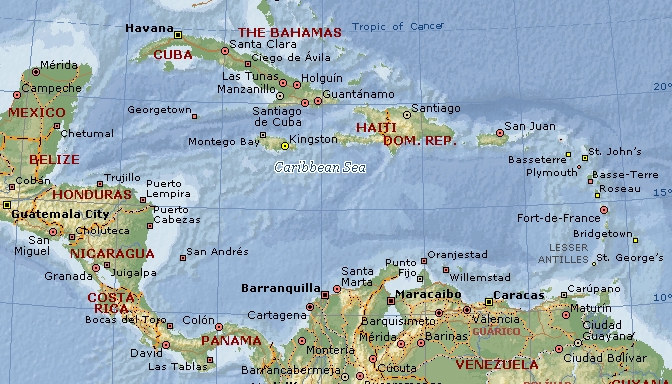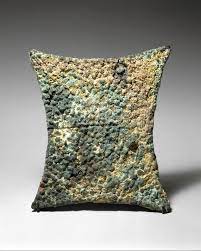Peter Marsh
Marsh, Peter

He takes Plato’s Atlantis account at face value and accepts that it flourished sometime around 9,500 BC. Additionally, in chapter 10 of his website, he refers to the Michigan copper mines and surmises that they were transported to Europe by Phoenicians and Berbers!
>Despite the above Marsh published a paper on the Atlantisforschung website unexpectedly entitled The Golden Age – Atlantis in the Caribbean(c).<
(a) https://web.archive.org/web/20190922053225/https://www.polynesian-prehistory.com/
(b) https://grahamhancock.com/phorum/read.php?1,210178,211208
Copper *
Copper was obviously a vital commodity for the Bronze Age Atlantis described by Plato. The source of this copper has led to frequent speculation among Atlantologists. Frank Joseph proposed that copper was the foundation for the wealth of Atlantis. He is convinced that there is evidence of enormous copper mining activities in Michigan’s Upper Peninsula around 1000 BC. He refers to these miners as Atlanteans [0102] and maintains that the extracted copper was brought to the Mediterranean, claiming that there is no trace of it in North America!
Joseph’s wild claim runs counter to the evidence offered by one of the leading mining engineers of his day, T.A. Rickard (1864-1953)(m). In 1934, Rickard published an extensive paper in The Journal of the Royal Anthropological Institute of Great Britain and Ireland entitled The Use of Native Copper by the Indigenes of North America(n). Rickard notes how early European colonists observed the native Americans using copper for tools and ornaments. A more recent entry(o) in Wikipedia offers further details reinforcing Rickard’s contention. Similarly, a March 2021 article in Archaeology offers evidence that native Americans were producing artefacts from copper as early as the 7th millennium BC and were probably the world’s first coppersmiths(r)(s).
In another article in Atlantis Rising magazine, Joseph proposed that the exploitation of the Michigan copper began in the sixth millennium BC with the arrival of the Red Paint People from Europe!(i)
Frank Joseph and Gavin Menzies are late with their claims regarding the exploitation of the Michigan copper by Atlanteans. In 1928, it was Giacinto Perrone in his book L’Atlantide [809] who was an early promoter of the idea of Atlantean involvement in the ancient Michigan copper mining(t).
J.S. Wakefield has written an extensive article(j) linking the Michigan mines with Poverty Point in Louisiana, where, he contends that the copper was cast into oxhide ingots. In the same article, he identified the Sea Peoples as the Atlanteans and their allies. In another paper(q) he presents a case for identifying the copper oxhide ingots discovered in the Late Bronze Age Uluburun shipwreck found off Turkey as originating in Michigan. He bases his claim on the unusual 99.5% purity of these copper ingots, which he claims is only to be found in the Great Lakes mines. Wakefield is a co-author with Reinoud de Jonge of Rocks & Rows: Sailing Routes Across the Atlantic and the Copper Trade [0760].
Roger Jewell has written an important book [0243] on this same historical mystery but dates the early mining to 2500 BC and estimates the quantity of copper mined at 20 million pounds. Jewell offers a range of evidence that points to Minoan traders, an idea taken up recently by Gavin Menzies, who quotes estimates of between three and five hundred million pounds, while others have suggested as much as 1.5 billion pounds have been extracted. These wild speculations have been derided by commentators such as Jason Colavito(b).
Dale Drinnon has an extensive entry on the Michigan copper mines on his wide-ranging website(c).
Philip Coppens also wrote a speculative article on the possible part that Michigan’s copper plated in global trade around 3000 BC(g). Commenting on the possible market for the Michigan copper, he wrote that it is remarkable, “that Bronze Age Europe ended in 1200 BC, which coincides with the end of the mining activities in America. Coincidence? The mining technique in America is also identical to those used on the British Isles, where the other component, tin, originated from.”
The America Unearthed TV series, presented by Scott Wolter, also examined the idea of Minoans mining in Michigan (S1 E3). Jason Colavito wrote a highly critical review of the episode(k), while an even more extensive critique can be found on the Archyfantasies.com website(l).
Ilias D. Mariolakos is a Professor Emeritus of Geology and Paleontology at the University of Athens. In 2010 he presented a paper to the 12th International Congress of the Geological Society of Greece stating that the prehistoric Greeks were familiar with the Atlantic Ocean and its Gulf Stream. He also claims that they exploited the Michigan copper mines to meet the needs of their bronze industry.
David Hatcher Childress, who is consistently generous with his speculations has proposed that the Hittites were responsible for the Michigan copper mining [620.65].
Peter Marsh has suggested(u) that the Michigan copper mining was the work of Berbers and Phoenicians!
Additionally, the late Bernhard Beier published two articles(v)(w) on the debate surrounding the astounding quantity of copper apparently mined in Michigan. It is clear that he, like Peter Marsh and others, was sympathetic to the idea that Old World miners were involved, who were possibly Phoenicians, Berbers or Egyptians.
John Jensen has noted(x) that “curiously, North American Indian mounds have been found to contain copper sheets made in the shape of animal hides. Called “reels,” their function, if any, is unknown. The reels do, however, resemble oddly shaped copper ingots common in European Bronze Age commerce. Their peculiar shape earned these ingots the name “oxhides” and has been found in Bronze Age shipwrecks, and are even said to be portrayed on wall paintings in Egyptian tombs. The standardized hide-like shape, with its four convenient handles, was useful in carrying and stacking heavy ingots. Could the reels from the North American mounds have been copied from the oxhides? It is tempting to speculate that the Copper Culture miners were actually an Atlantic rim colony.“
A further word of caution regarding North American copper oxhide ingots is offered by a report from Andy White outlining his attempts to verify their existence(y).
So far, we have on offer, Native Americans, Red Paint People, Sea Peoples, Greeks, Minoans, Hittites, Atlanteans, Berbers and Phoenicians all allegedly involved in the ancient exploitation of the Michigan copper. Take your pick, but base your choice on evidence, if any, rather than speculation.
It is claimed that the local Indians have folk memories of the mines being worked by ‘light-skinned’ men, suggesting a possible European or Mediterranean connection. Frank Joseph implies that these natives had little interest in copper although one of the cultures in the Great Lakes region was known as the Old Copper Indian because of their extensive use of copper for weapons, tools and ornaments(h). Furthermore as early as 1585 British settlers on Roanoke Island noted that the indigenous people there put a high value on copper.
A more conventional analysis of the Michigan copper mining mystery is presented by local archaeologists. They point out that the views of commentators such as Frank Joseph are very generous with speculation but somewhat mean with evidence. Dr Susan R. Martin of Michigan Technological University has published a point-by-point refutation(a) of the many wild claims that have been made about the Michigan mines in The Michigan Archaeologist [41 (2-3) p119-138. June-September 1995].
Even more extreme was the suggestion made by Reinoud M. de Jonge in a 2009 paper(e) where he boldly claimed “that during the whole period of the (Michigan) copper trade, America was part of the Egyptian Empire” and during the Old Kingdom “this huge empire was known as Atlantis”! De Jonge expanded on this in a 2012 paper, justifying his claims with an incredibly detailed interpretation of the Phaistos Disk, which appears to be highly speculative(p).
In the eastern Mediterranean, Cyprus, taking its name from copper, provided much of that metal, which enabled the development of the Bronze Age there. In the central and Western Mediterranean ancient copper mines have been identified in Iberia, Morocco and Sardinia as well as sources of tin. However, a 1982 paper(f) claimed that Laurion in Attica, Greece was equally as important as Cyprus as a source of Bronze Age copper.
The earliest known metal mine in the British Isles was on Ross Island, near Killarney in Ireland. Copper was mined there from 2400 BC until 1900 BC(d) and the site is thought to have been the principal source of the metal for the two islands at that time.
Supporters of an earlier date for Atlantis can point to evidence of worked metal around 9000 BC discovered in Anatolia, Turkey. More recently there were metal beads discovered in Bulgaria tentatively dated to 6000 BC.
(a) See Archive 2547
(c) See: Archive 3597
(e) https://megalithicresearch.blogspot.com/2009/12/copper-trade-with-old-world-poverty.html
(f) https://www.academia.edu/954316/Bronze_Age_copper_sources_in_the_Mediterranean_a_new_approach
(g) See Archive 2724
(h) https://en.wikipedia.org/wiki/Old_Copper_Complex
(i) See Archive 3389
(k) https://www.jasoncolavito.com/blog/review-of-America-unearthed-s01e03-great-lakes-copper-heist
(m) https://aimehq.org/programs/award/bio/t-rickard-deceased-1953
(n) https://www.jstor.org/stable/pdf/2843810.pdf
(o) https://en.wikipedia.org/wiki/Old_Copper_Complex
(p) https://www.academia.edu/3894415/COPPER_AND_TIN_FROM_AMERICA_c.2500-1200_BC_
(q) https://grahamhancock.com/wakefieldjs1/
(s) https://www.nps.gov/kewe/learn/historyculture/copper-mining-timeline.htm
(t) https://archive.org/details/PerroneAtlantide
(u) https://web.archive.org/web/20190922053225/http:/www.polynesian-prehistory.com/ (chapter 10)
(x) (99+) Ancient Canal Builders – Overview | John Jensen – Academia.edu (p.32)
(y) https://www.andywhiteanthropology.com/blog/the-oxhide-ingot-from-lake-gogebic-michigan
Caribbean
The Caribbean Region with the many islands of the West Indies is favoured by a number of authors who find in the writings of classical writers evidence of very early knowledge of the islands in the western Atlantic by the peoples of the Mediterranean. As a source, these ancient authors have to be treated with great care, as so much of the historical and geographical details are at best second-hand and sometimes just conjectural if not fictional. This is compounded by the fact that so many of these early writers borrowed from each other so that an early ‘fact’ that is erroneous could be transmitted unchecked for centuries if not permanently.
 The seas around many of the Caribbean Islands are quite shallow indicating that during the last Ice Age the exposed land area must have been considerably larger. If Atlantis existed in this region there are many candidate locations.
The seas around many of the Caribbean Islands are quite shallow indicating that during the last Ice Age the exposed land area must have been considerably larger. If Atlantis existed in this region there are many candidate locations.
>Geoffrey Ashe noted that in the 5th century, the neo-Platonist Proclus, quoting a 1st century BC geographer named Marcellus, spoke of three islands of ‘immense extent’ located in the Atlantic Ocean. The inhabitants of the centre of these islands were said to have preserved the memory of a former landmass, identified by Proclus with Atlantis, which had existed thereabouts. In 1962, in Land to the West [740] historian Ashe identified Marcellus’ three great islands with the Greater Antilles of the Caribbean. Moreover, he pointed out that the indigenous peoples of the region preserved the memory of a cataclysm, which had split up a former landmass leaving behind the islands that make the archipelagos, which we have today. All but a few human beings were drowned in this all-encompassing event. Could this have been a memory of the destruction of Atlantis preserved in the Caribbean and brought across the Atlantic by ancient mariners such as the Phoenicians and Carthaginians?<
>Atlantisforschung has drawn attention to the work of Harold T. Wilkins who, in 1952 had pointed out the mythology of the islanders of the West Indies in Secret Cities of Old South America [364], and in particular to the almost astonishing similarities between West Indian-Caribbean and Irish myths. Wilkins also noted: “In the hinterland of the British West Indies island of Trinidad, the Natives of Aboriginal origin affirm that Trinidad is a very old country, and formed part of ‘the greatest country in the world’ many thousands of years ago. This was a time ‘when there was no sea at all’. This large, antediluvian country or continent is called IERE by the natives, which is pronounced almost exactly like EIRE for Ireland. And ancient Trinidad too, the natives say, was known as Iere before the great cataclysm that sank the lost continent” (e).<
>Gonzalo Fernández de Oviedo y Valdés writing in the 16th century[1117] considered the Antilles in the Caribbean to have been the legendary Isles of Hesperides. Andrew Collins also identified Cuba as one of the Hesperides.<
An American researcher, Amy Smith, has produced a website claiming that Atlantis had been located on a now demolished landbridge linking Cuba with the Yucatan Peninsula, in the Caribbean and was destroyed at the end of the last Ice Age when the Mississippi was dramatically swollen by meltwater from the retreating glaciers and poured into the Gulf of Mexico, which was then an enclosed sea. This in turn led to the breaching of the landbridge linking Cuba and the Yucatan Peninsula and the destruction of Atlantis in its vicinity. Smith has recently expanded on the events leading to the destruction of Atlantis(b).
Edgar Cayce’s followers in A.R.E. have focused their attention on the Bimini sector of the Bahamas, although Greg Little opted for a location just north of the Isle of Youth off Cuba. Andrew Collins is also convinced that Atlantis was in located near the Isle of Youth, while, more recently, Norman Frey has added his support to the same locality. Mel Fisher claimed to have found Atlantis in the vicinity of Cuba but failed to reveal the exact location before his death. The Italian researcher, Emilio Spedicato, has chosen the nearby island of Hispaniola.
Gábor Bihari, the Hungarian researcher, submitted a paper to the 2008 Atlantis Conference outlining his view that Plato’s Atlantis story was loosely based on reports of a very ancient empire in the Caribbean brought back to Europe by refugees from there after it was inundated at the end of the last Ice Age.
Peter Marsh is a keen diffusionist with a particular interest in the peoples of the Pacific(a). However, this has not precluded him from looking at the Atlantic, where he concluded that the Azores were most likely to be remnants of Atlantis based on Plato’s description. Despite this Marsh published a paper on the Atlantisforschung website unexpectedly entitled The Golden Age – Atlantis in the Caribbean(d).
In December 2009, we were subjected to one of the periodic claims that Atlantis had been ‘found’, this time in the Caribbean. Poor-quality images were offered as evidence of a submerged city. While it is understandable that the discoverers might be reluctant to disclose the exact location, it is more difficult to understand why they were equally unwilling to disclose their own identities. They also claimed, without evidence, that the structures predated the pyramids of Egypt. Funds are now being sought for a fully-fledged expedition.
Jay/Brad Yoon offered support for a Caribbean Atlantis in a short 2012 book, Atlantis Shrugged[1371], in which he claims that a dry Caribbean Basin, 13,000 feet below sea level, was home to Atlantis, but the surrounding ring of mountains retaining the ocean was shattered by an earthquake and flooded Atlantis.
Dr. P.P. Flambas joined the Caribbean supporters in December 2016, with the publication of Plato’s Caribbean Atlantis[1368], a huge tome of over 900 pages.
Even more startling is the wild suggestion that Antigua, one of the Caribbean’s Leeward Islands, in an hour-long YouTube video(c) may have been Atlantis. This rambling, often boring, film offers no real evidence apart from some megalithic features, the likes of which have been found around the world.
In 2019, Eddie Weaver published a short Kindle book, The Antediluvian Signature: Atlantis [1724]. In it, he claimed that a site some miles south of Jamaica, known as Pedro Bank, was the location of Atlantis. He endeavours to support his claim with a subjective interpretation of a lot of Google Earth imagery.
(a) https://web.archive.org/web/20190922053225/https://www.polynesian-prehistory.com/
(b) https://web.archive.org/web/20131019085533/https://www.losthistorypublishing.com/Atlantis.html
(c) https://www.youtube.com/watch?v=Kx6h5qk27Sw
(e) Iere – Das Atlantis der Kariben – Atlantisforschung.de (atlantisforschung-de.translate.goog) *

